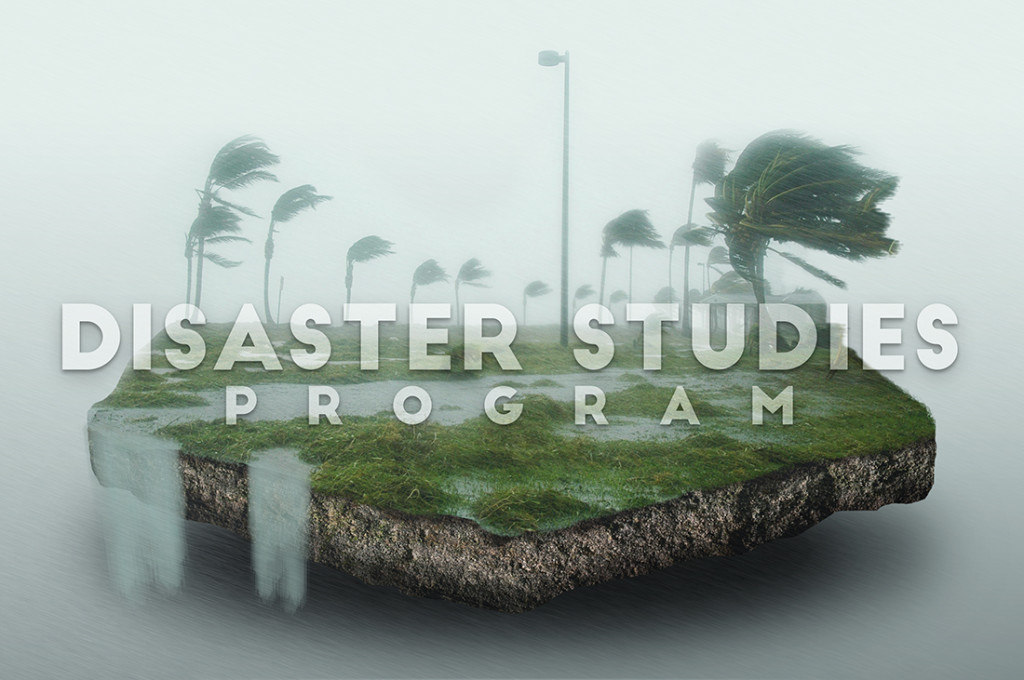

This fall, the University of Texas Rio Grande Valley will offer a Master of Arts in Disaster Studies.
The new master’s degree is open to any student with a bachelor’s degree in any field. Some students may have to take the Graduate Record Examinations, the Test of English as a Foreign Language (TOEFL) or both. Students must take the GRE if their GPA is below a 3.0 upon obtaining their bachelor’s degree. If a student is from another country, he or she will have to take the TOEFL. If students have a GPA below 3.0 GPA and are from another country, they must take both exams. The deadline to apply is July 1.
The program is 36 hours long and will have a thesis and non-thesis option. Classes will be available on the Edinburg campus, Brownsville campus and online. After graduating, individuals with this degree have a range of career opportunities such as emergency management, hospital planning and homeland security.
William Donner, an associate professor in sociology and anthropology, is also the program coordinator with an expertise in disaster studies.
“The disaster studies program is designed to train emergency managers who have expertise in the human side of a disaster–how people respond to warnings, how they prepare [and] how emergency managers do their jobs,” Donner said. “[Disaster studies] also trains the natural science side of things–how to read radar data, how to understand a seismograph or understand how levies work–the engineering side of things.”
Donner and Walter Diaz, the dean of the College of Liberal Arts, noticed a demand in the field and a lack of disaster studies programs at the regional level.
Several UTRGV faculty and staff have a background in disaster studies from different core fields to accommodate the program. However, those who specialize in geography and geographic-information systems are new employees to the university.
“We have people from the social sciences, where our core faculty [is], but we also have people from engineering, from natural sciences and from the department of Communication,” Diaz said. “[These] people have different levels of experience in preparation in the field, but from different perspectives. … There are a lot of pieces already in the university–what we needed was someone with a specialist in the field, like [Donner], to put these pieces together into a coherent, high-quality program.”
The approach to disaster studies differs on a regional level. Emergency managers need to accommodate to the needs of the population such as the language barrier, colonias or the migratory majority.
“The region faces unique challenges as far as disasters go and those unique challenges don’t just emerge from the event itself, like the hurricane or the flood,” Donner said. “It emerges because we live in a very unique kind of sociocultural area. So, there’s a distinct need for an emergency management program in the area because we need emergency managers who kind of understand the unique linguistic and cultural needs of the folks that they’re serving. A lot of the needs resonate with emergency managers who are from the region.”
The needs of people in the Rio Grande Valley differ from those in North Texas, Diaz said.
“If you get people trying to evacuate from an area exposed to flooding, you may approach that issue differently if you’re dealing with the upper-middle class majority community in Central Texas,” Diaz said. “It’d be very different than the colonia, where you have a large segment of the population who may be undocumented immigrants. Therefore, if you say, ‘Oh we set up a very nice shelter in city hall,’ people may be very reluctant to move over there because they may feel like they’re exposing themselves to being arrested or deported, so you have to consider all those factors. Those factors vary from region to region and community to community.”
Disasters don’t have to be a natural occurrence. Some can be caused by people, such as derailing a train that carries hazardous chemicals, Diaz said.
“What you call a disaster is not just a physical or natural event,” he said. “From the perspective of social scientists, we can almost say, almost categorically, that there is no such thing as a natural disaster. All disasters are human-caused, [have] a human factor or an intervening variable. You can have a Category 5 hurricane just spinning around in the middle of the Atlantic and that’s not a problem. The problem is when that Category 5 hits a populated area. … What causes the disaster is the interaction between the event, which can be natural or it can be human.”
Donner received a $300,000 grant from a European insurance company, AXA Foundation. AXA is the State Farm insurance company of Europe that focuses on mitigating and preparing risks, Donner said. Several other scholars received the grant from countries including Japan, Italy and Spain. Donner will use the grant to map the different colonias throughout the Valley and figure out the best way of communicating with the residents.
“[The AXA Foundation], in addition to their insurance responsibility, have a scientific component as well that fund scholars whose work is focused on mitigating risks,” Donner said. “We’re fortunate enough to receive it. The kinds of projects that they fund are diverse–I went to France a couple of weeks ago because they were acknowledging the scholars who received the grant. I was sitting next to someone from Spain who was developing quantum encryption techniques for computers at the quantum level. It’s a really diverse group of scholars.”





